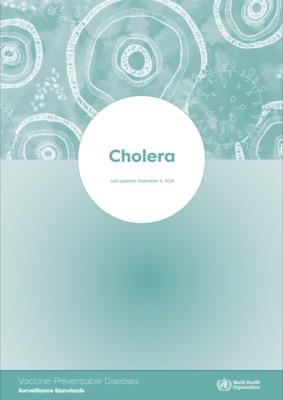Cholera: Vaccine Preventable Diseases Surveillance Standards

Overview
Cholera is a diarrhoeal disease caused by toxigenic
serogroups of the bacterium Vibrio cholerae, which can
cause rapid dehydration and death. Cholera is closely
associated with poverty, poor sanitation and lack of
clean drinking water. As such, the cholera burden is
concentrated in Africa and southern Asia, accounting
for about 99% of worldwide cases. Cholera can be
endemic and cause epidemics. Cholera bacteria are
spread by direct faecal-oral contamination or ingestion
of contaminated water or food. The incubation period
is less than 24 hours to 5 days. Only up to 25% of
infected persons become symptomatic; of these, 10–20%
experience severe disease. Severe disease manifests as
acute, profuse watery diarrhoea (“rice water stools”),
usually with vomiting.
This leads to rapid dehydration,
which can result in hypotensive shock, renal failure and
death within hours of onset.
The cholera case fatality rate should be below 1%
where access to care with proper rehydration services
(oral and/or intravenous) is available, but it may reach
5% in the most vulnerable settings. Cholera affects all
age groups, although half of the cholera deaths are in
children < 5 years of age. Current estimates of cholera
cases range from 1.4 to 4 million, and estimated cholera
deaths range from 21,000 to 143,000 (1). However,
global burden of cholera is underestimated due to
contributing factors such as low reporting, limited
epidemiological surveillance and lack of laboratory
capacity.
